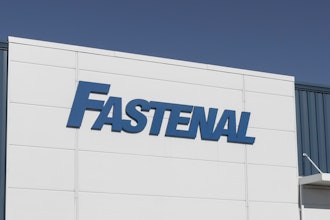|
Barrett Thompson |
So, how do you do this? How can you possibly manage and optimize prices across the broad range of products, customers, and applications that are typical in this industry? How do you deliver the right price for what could be thousands of different deal circumstances?
For decades, this has been a central pricing challenge for B2B manufacturers. They’ve known that accurate pricing is crucial to their growth and profitability, but the sheer magnitude of the issue made it seem insurmountable.
Enter the Magical MatrixIn recent years, many companies have discovered the power of the price matrix to deliver different prices to different deal circumstances without the need to stop, analyze, and negotiate each and every deal as it comes in the door.
A price matrix accomplishes this feat by generating a set of structured “cells” along its dimensions, for example, customer size, sales region, and industry vertical. Various combinations of these dimensions produce thousands of unique cells. Appropriate price points are assigned to each cell in the matrix, and invoice prices are fetched from the matrix cells at the time an order is placed. This approach permits much more precise and targeted pricing than one-size-fits-all price lists. And, because it avoids any margin-eroding negotiations, the matrix business tends to enjoy higher overall profits than spot-bids or customer-specific agreements.
On the surface, the price matrix approach seems like the perfect solution to deliver targeted pricing to specific segments of your market in a leveraged way. Why then are so many price matrices failing to achieve their full potential?
The Matrix Has a Fatal FlawThe big problem with the typical price matrix implementation is that the operational goal of the matrix program is all wrong. The unstated objective of the program is to reduce the complexity and effort for the people involved in the day-to-day management of the matrix, rather than to maximize the financial benefit to the organization for using matrix pricing.
It’s quite common for those who maintain the matrix to feel overwhelmed by the size of the matrix and the complex relationships needed to support good-better-best product strategies, varying units-of-measure for the same underlying item, responses to competitor price moves, and so on. As a result, the focus shifts away from the quality and accuracy of the price-points themselves and onto various coping mechanisms such as controlling large sets of prices with overly-simplistic formulas, or identifying a few priority areas that will get most of the pricing attention while the rest of the matrix is ignored.
|
Rafe VanDenBerg |
But is this really so bad?
Actually, yes. High-level policies that price large slices of the business in lock-step can’t help but leave money on the table and put profitable sales at risk at the same time. Because broad policies are completely blind to segments of the market that are actually willing to pay more, margin-dollars are left on the table through under-pricing. Broad policies are also blind to segments of the market that can be sold-to profitably, albeit at a slightly lower price so profitable sales are lost through over-pricing.
The unfortunate reality is that when compounded by finite human resources, rules-of-thumb thinking, and the spreadsheet-based tools typically used by the matrix team, there is often a hard upper-limit placed on the profit potential of a price matrix program right from the start.
Infusing Science Into Your Matrix
To address the fatal flaw, leading manufacturers are using the emerging discipline of pricing science. Pricing science is an objective, data-driven approach that uses advanced mathematical and statistical analysis to uncover actual cause-and-effect relationships between buying circumstances and market prices. Pricing science results are presented as actionable “answers” for those who manage price.
Manufacturers are using pricing science to replace guesswork in the three areas that have the greatest influence on price-matrix profitability:
- The dimensions of the matrix itself. Instead of guessing about which matrix dimensions to use or defaulting to some internal reporting- or sales-structure, companies are using science to identify matrix dimensions that line up with how the market actually responds to price. Put another way, these companies are identifying, with scientific accuracy, the specific conditions that determine whether the customer is willing to pay a higher or lower price. Then they can build their matrices around those dimensions.
- The customer-assignments to the matrix. Instead of guessing about which customers to assign to which matrix, or allowing the salesperson to choose the price-level they want to offer, companies are using science to determine the matrix-assignment criteria. Using science, they are identifying the specific combinations of demographics, performance, and service levels that warrant assignment to one matrix or another. As a result, they are avoiding the unintentional erosion that naturally results from more subjective assignment.
- The individual price-points in the matrix. These leading companies are using a combination of science and technology to address the most powerful driver of margin-lift available in matrix pricing—the individual price-points themselves. Instead of pricing at a high-level of aggregation, these companies are able to manage and optimize matrix prices at a SKU level. By optimizing prices at a more granular level, these companies are able to dial-in the exact prices that will win the business at maximum margins, across a much greater variety of deal circumstances.
A Profitable and Manageable Solution
Prior to taking steps to improve, one leading distributor managed their price matrix through broad, vendor-level price policies such as, “All Acme widgets will be priced at 28 percent off MSRP.” Not surprisingly, Acme manufactures over 170 types of widgets, with list prices ranging from $50 to more than $750 dollars.
Does anyone really believe that every one of those widgets has a value to every end-customer of exactly 28 percent off MSRP? Isn’t it likely that there are certain widgets that are valued more because of special features or because they got a great review, especially for a certain set of customers with a specific application in mind? Of course, but it’s impossible to capture that value as incremental margin with this simplistic price-setting approach. Couldn’t there be other widgets that are valued less because they’re highly commoditized, at least in certain parts of the market? Certainly, yet the one-size-fits-all price policy is driving away profitable sales for such models.
To get beyond their simplistic approach and squeeze more profits from their price matrix, this distributor took a small handful of powerful steps. They used science to modify their matrix structure and customer assignment rules adding a “Customer Spend” dimension with seven scientifically-validated spend levels, and a dimension for the customers’ preferred service levels. They used science to replace their high-level pricing policies with optimized prices for each and every SKU in the matrix. And finally, they used pricing software technology to enable their transition and provide ongoing flexibility, responsiveness, and ease-of-management.
For this company, these scientific improvements to their matrix produced an immediate incremental gain of 10 percent in gross-profit dollars—ultimately returning over $27M to the business each year.
The Best of Both Worlds
By infusing science into their pricing matrix, manufacturers can finally have the best of both worlds. They can have all of the convenience and leverage that a price matrix affords, while not having to sacrifice the profit-opportunity provided by more-specific, market-aligned prices. The basic concept is really pretty simple and straightforward—build a better matrix and make more money. So what are you waiting for?
Rafe VanDenBerg and Barrett Thompson lead the Pricing Excellence group at Zilliant, Inc., the leading provider of B2B price optimization and margin management solutions based in Austin, Texas. They can be reached at pricingexcellence@zilliant.com or at (877) 893-1085.


















